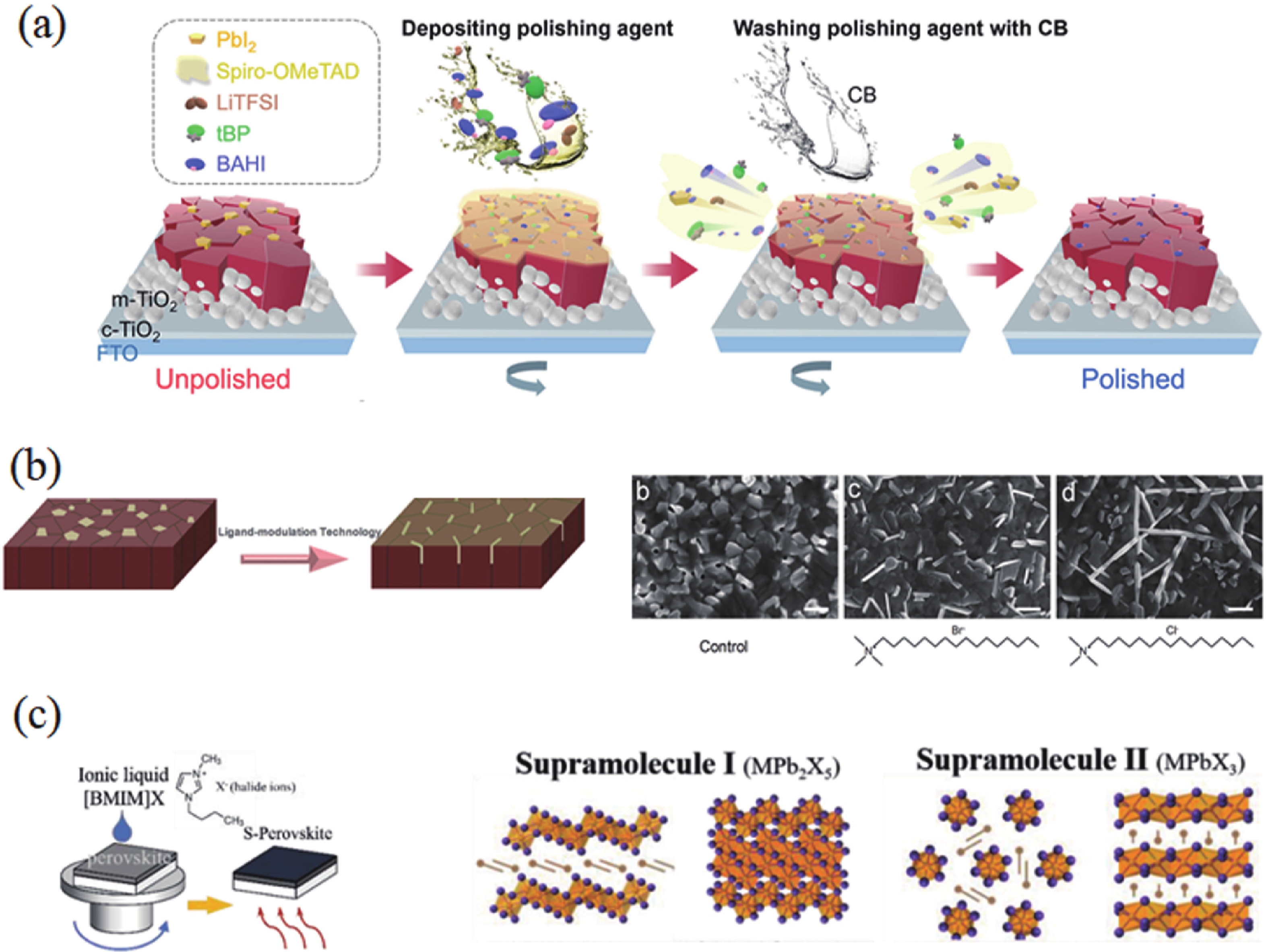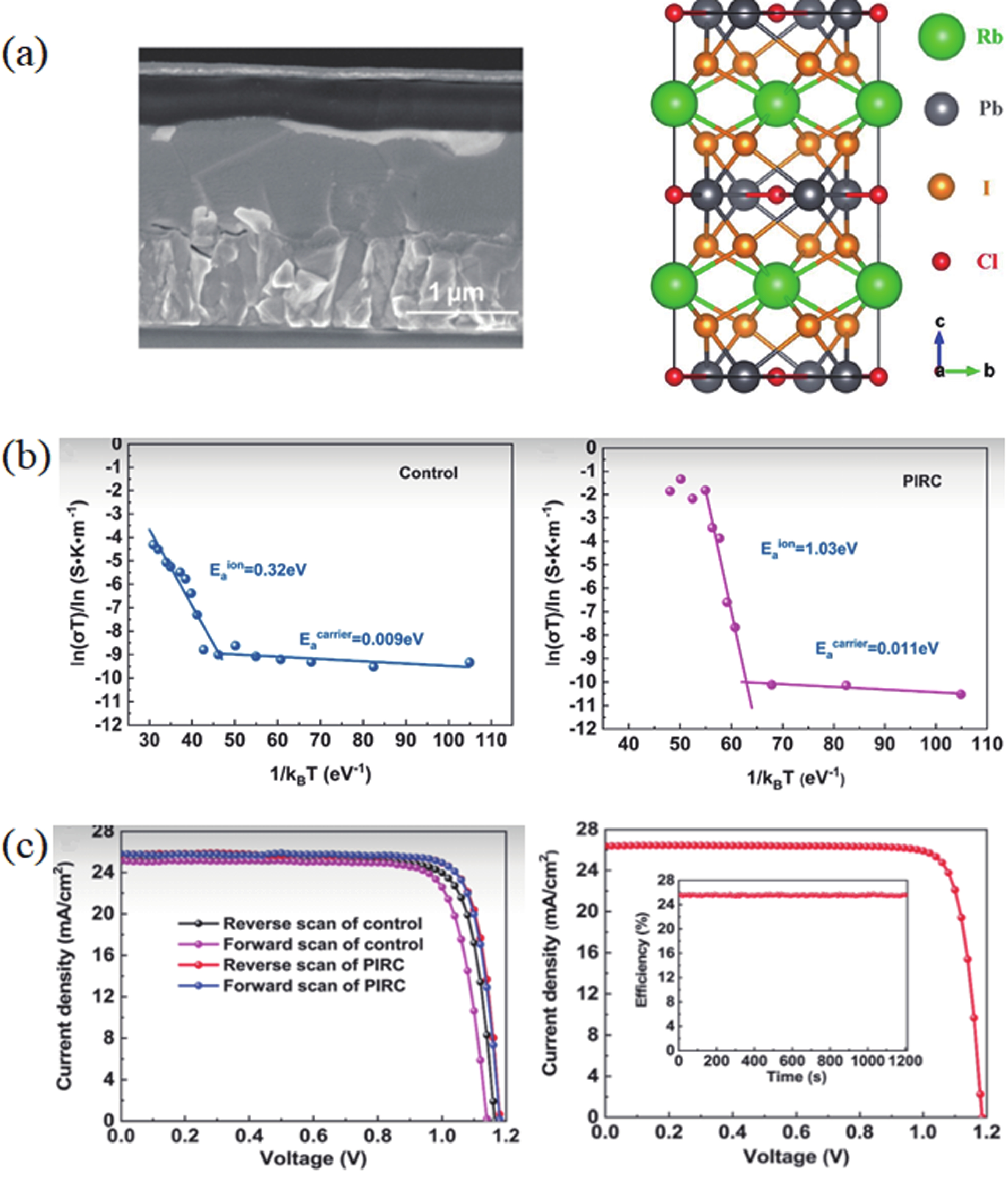| Citation: |
Xiaodong Li, Jie Sun, Bozhang Li, Junfeng Fang, Liming Ding. Managing excess PbI2 for efficient perovskite solar cells[J]. Journal of Semiconductors, 2023, 44(8): 080202. doi: 10.1088/1674-4926/44/8/080202
****
X D Li, J Sun, B Z Li, J F Fang, L M Ding. Managing excess PbI2 for efficient perovskite solar cells[J]. J. Semicond, 2023, 44(8): 080202. doi: 10.1088/1674-4926/44/8/080202
|
Managing excess PbI2 for efficient perovskite solar cells
DOI: 10.1088/1674-4926/44/8/080202
More Information
-
References
[1] Zhao Y, Ma F, Qu Z H, et al. Inactive (PbI2)2RbCl stabilizes perovskite films for efficient solar cells. Science, 2022, 377, 531 doi: 10.1126/science.abp8873[2] Yoo J J, Seo G, Chua M R, et al. Efficient perovskite solar cells via improved carrier management. Nature, 2021, 590, 587 doi: 10.1038/s41586-021-03285-w[3] Jiang Q, Zhang L Q, Wang H L, et al. Enhanced electron extraction using SnO2 for high-efficiency planar-structure HC(NH2)2PbI3-based perovskite solar cells. Nat Energy, 2017, 2, 16177 doi: 10.1038/nenergy.2016.177[4] Chen Q, Zhou H P, Song T B, et al. Controllable self-induced passivation of hybrid lead iodide perovskites toward high performance solar cells. Nano Lett, 2014, 14, 4158 doi: 10.1021/nl501838y[5] Luo C, Zhao Y, Wang X J, et al. Self-induced type-I band alignment at surface grain boundaries for highly efficient and stable perovskite solar cells. Adv Mater, 2021, 33, 2103231 doi: 10.1002/adma.202103231[6] Jacobsson T J, Correa-Baena J P, Halvani A E, et al. Unreacted PbI2 as a double-edged sword for enhancing the performance of perovskite solar cells. J Am Chem Soc, 2016, 138, 10331 doi: 10.1021/jacs.6b06320[7] Liu F Z, Dong Q, Wong M K, et al. Is excess PbI2 beneficial for perovskite solar cell performance? Adv Energy Mater, 2016, 6, 1502206 doi: 10.1002/aenm.201502206[8] Holovský J, Peter A A, Landová L, et al. Lead halide residue as a source of light-induced reversible defects in hybrid perovskite layers and solar cells. ACS Energy Lett, 2019, 4, 3011 doi: 10.1021/acsenergylett.9b02080[9] Li X D, Fu S, Liu S Y, et al. Suppressing the ions-induced degradation for operationally stable perovskite solar cells. Nano Energy, 2019, 64, 103962 doi: 10.1016/j.nanoen.2019.103962[10] Wang T, Zhang Y, Kong W Y, et al. Transporting holes stably under iodide invasion in efficient perovskite solar cells. Science, 2022, 377, 1227 doi: 10.1126/science.abq6235[11] Li X D, Fu S, Zhang W X, et al. Chemical anti-corrosion strategy for stable inverted perovskite solar cells. Sci Adv, 2020, 6, eabd1580 doi: 10.1126/sciadv.abd1580[12] Li X D, Zhang W X, Guo X M, et al. Constructing heterojunctions by surface sulfidation for efficient inverted perovskite solar cells. Science, 2022, 375, 434 doi: 10.1126/science.abl5676[13] Yu H, Lu H P, Xie F Y, et al. Native defect-induced hysteresis behavior in organolead iodide perovskite solar cells. Adv Funct Mater, 2016, 26, 1411 doi: 10.1002/adfm.201504997[14] Zhao L C, Li Q Y, Hou C H, et al. Chemical polishing of perovskite surface enhances photovoltaic performances. J Am Chem Soc, 2022, 144, 1700 doi: 10.1021/jacs.1c10842[15] Wang H H, Wang Z W, Yang Z, et al. Ligand-modulated excess PbI2 nanosheets for highly efficient and stable perovskite solar cells. Adv Mater, 2020, 32, 2000865 doi: 10.1002/adma.202000865[16] Zhang H K, Yu W, Guo J X, et al. Excess PbI2 management via multimode supramolecular complex engineering enables high-performance perovskite solar cells. Adv Energy Mater, 2022, 12, 2201663 doi: 10.1002/aenm.202201663 -
Proportional views






 DownLoad:
DownLoad:











 Xiaodong Li:got his PhD in 2016 from Ningbo Institute of Material Technology & Engineering (CAS). Then he started his postdoctoral research in NIMTE on OSCs and PSCs from 2016 to 2019. He joined East China Normal University in 2019 and became a full professor in 2022. His work focuses on perovskite solar cells
Xiaodong Li:got his PhD in 2016 from Ningbo Institute of Material Technology & Engineering (CAS). Then he started his postdoctoral research in NIMTE on OSCs and PSCs from 2016 to 2019. He joined East China Normal University in 2019 and became a full professor in 2022. His work focuses on perovskite solar cells Junfeng Fang:got his PhD in 2006 from Changchun Institute of Applied Chemistry (CAS). He started his postdoctoral research in Umeå University (Sweden) and University of Cambridge (UK) from 2006 to 2010. He worked at Ningbo Institute of Material Technology & Engineering (CAS) as a professor from 2011 to 2019. Then he joined East China Normal University in 2019 and has been working as the director of Engineering Research Center of Nanophotonics & Advanced Instrument (MoE). His work focuses on perovskite solar cells
Junfeng Fang:got his PhD in 2006 from Changchun Institute of Applied Chemistry (CAS). He started his postdoctoral research in Umeå University (Sweden) and University of Cambridge (UK) from 2006 to 2010. He worked at Ningbo Institute of Material Technology & Engineering (CAS) as a professor from 2011 to 2019. Then he joined East China Normal University in 2019 and has been working as the director of Engineering Research Center of Nanophotonics & Advanced Instrument (MoE). His work focuses on perovskite solar cells Liming Ding:got his PhD from University of Science and Technology of China (was a joint student at Changchun Institute of Applied Chemistry, CAS). He started his research on OSCs and PLEDs in Olle Inganäs Lab in 1998. Later on, he worked at National Center for Polymer Research, Wright-Patterson Air Force Base and Argonne National Lab (USA). He joined Konarka as a Senior Scientist in 2008. In 2010, he joined National Center for Nanoscience and Technology as a full professor. His research focuses on innovative materials and devices. He is RSC Fellow, and the Associate Editor for Journal of Semiconductors
Liming Ding:got his PhD from University of Science and Technology of China (was a joint student at Changchun Institute of Applied Chemistry, CAS). He started his research on OSCs and PLEDs in Olle Inganäs Lab in 1998. Later on, he worked at National Center for Polymer Research, Wright-Patterson Air Force Base and Argonne National Lab (USA). He joined Konarka as a Senior Scientist in 2008. In 2010, he joined National Center for Nanoscience and Technology as a full professor. His research focuses on innovative materials and devices. He is RSC Fellow, and the Associate Editor for Journal of Semiconductors



